Hunt continues for missing Viking hoard artefacts
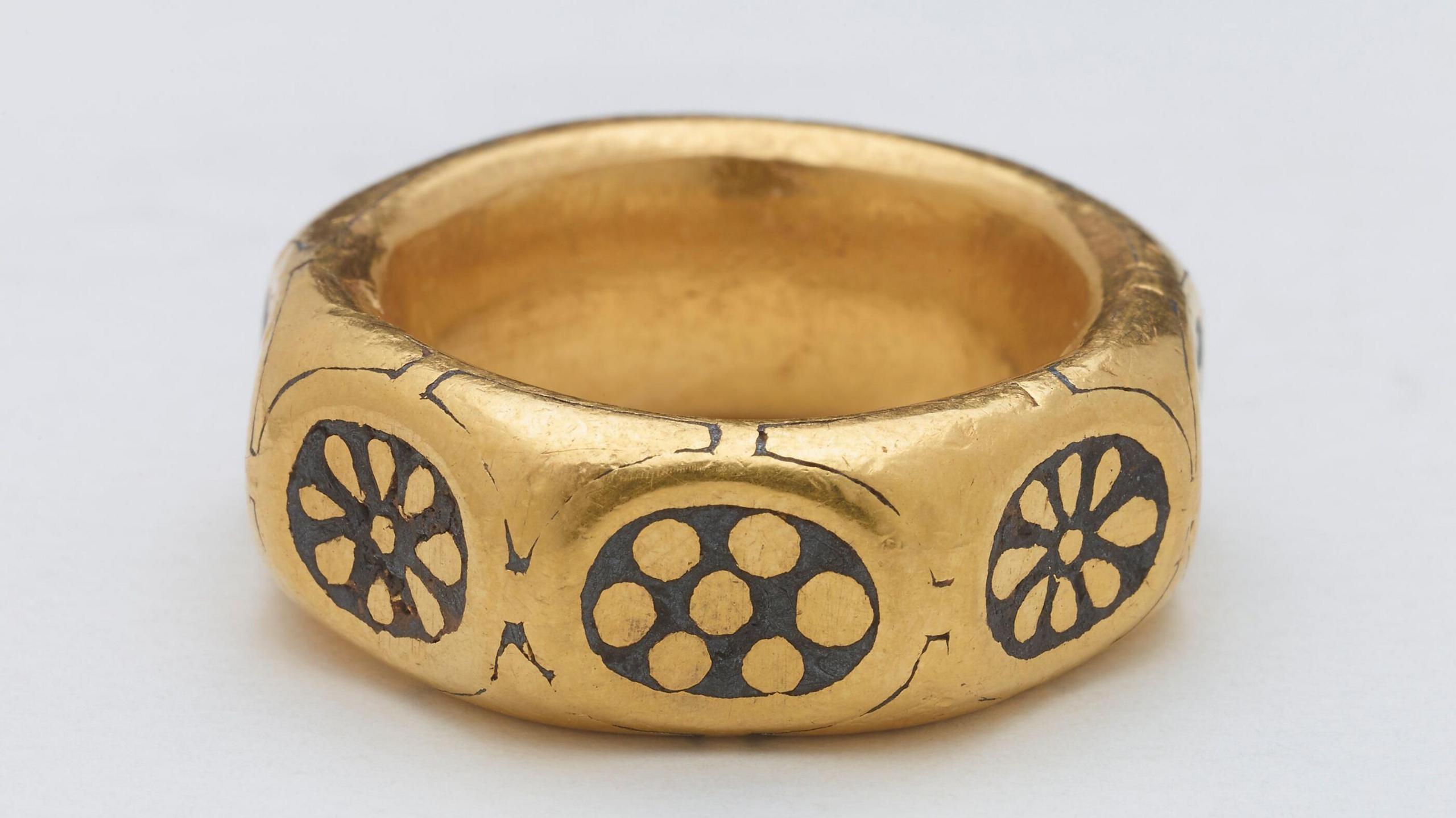
A gold ring was part of a hoard unearthed in Herefordshire in 2015
- Published
When a hoard of priceless gold jewellery and hundreds of silver coins was discovered in a Herefordshire field in 2015, it changed the history of England and the Welsh Marches.
The huge gold ring and bracelet with a dragon’s head clasp, crystal rock pendant, silver ingot and collection of coins had been buried in a field by Vikings in the ninth century.
But after nine years, police investigations and numerous court cases, the whereabouts today of most of the Herefordshire Hoard still remain a mystery.
This week, one of the men who stole the treasure was back in court. But that has offered no clues as to where the missing items are hidden.
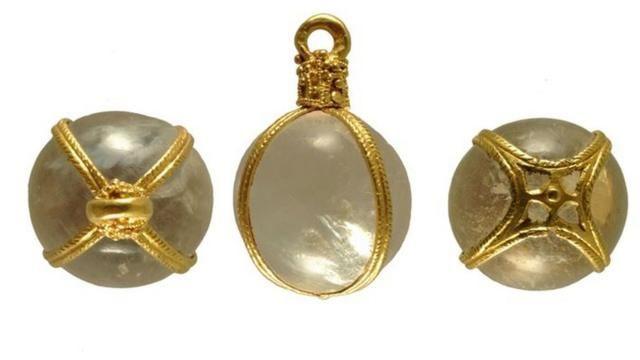
The crystal pendant is believed to date from the 5th to 7th centuries
The gold jewels and coins had laid hidden for 1,100 years until metal detectorists George Powell and Layton Davies found them.
They could have become millionaires if they had declared the find as required by law, but instead they wanted to keep it for themselves and profit in secret.
In 2019, the men were convicted of theft and concealing the find. As he sent them to jail, Judge Nicholas Cartright said they had stolen “from the nation".
What the hoard told us changed the history of England. One coin in particular showed that King Coenwulf of Mercia and King Alfred of Wessex ruled together in an alliance – something previously unknown.
But the items recovered by police are not the extent of the hoard.

The appeal court refused George Powell's application for an appeal
Photos taken by Powell and Davies showed an estimated 300-plus coins in a freshly-dug hole, but only a few dozen have been found.
Police believe they are in the hands of organised crime gangs across the world.
In 2019, Craig Best from County Durham and Roger Pilling from Lancashire were jailed after being caught in an undercover police sting that saw them trying to sell 45 coins - items which experts believed were part of the hoard.
But where are the rest of the coins?
In 2021, George Powell and Layton Davies were back at Worcester Crown Court for a proceeds of crime hearing.
They told the court conflicting accounts of only a few dozen coins being found; the hoard being discovered somewhere else and moved to Herefordshire; the coins being sold via an auction house in Austria to dealers whose names they did not know.
Judge Nicholas Cartright said he did not believe them and ordered the pair to pay more than £600,000 each or spend five more years in jail.
The hunt for the remaining treasure continues, and historians across the country are desperate to find it.
“With each coin, each object, we have an opportunity to connect with our past and understand more about how people lived then and what that means today,” said Damian Etheraads from Hereford Museum.
“We are eager to see the hoard recovered and support the police and courts' work in making this happen.”
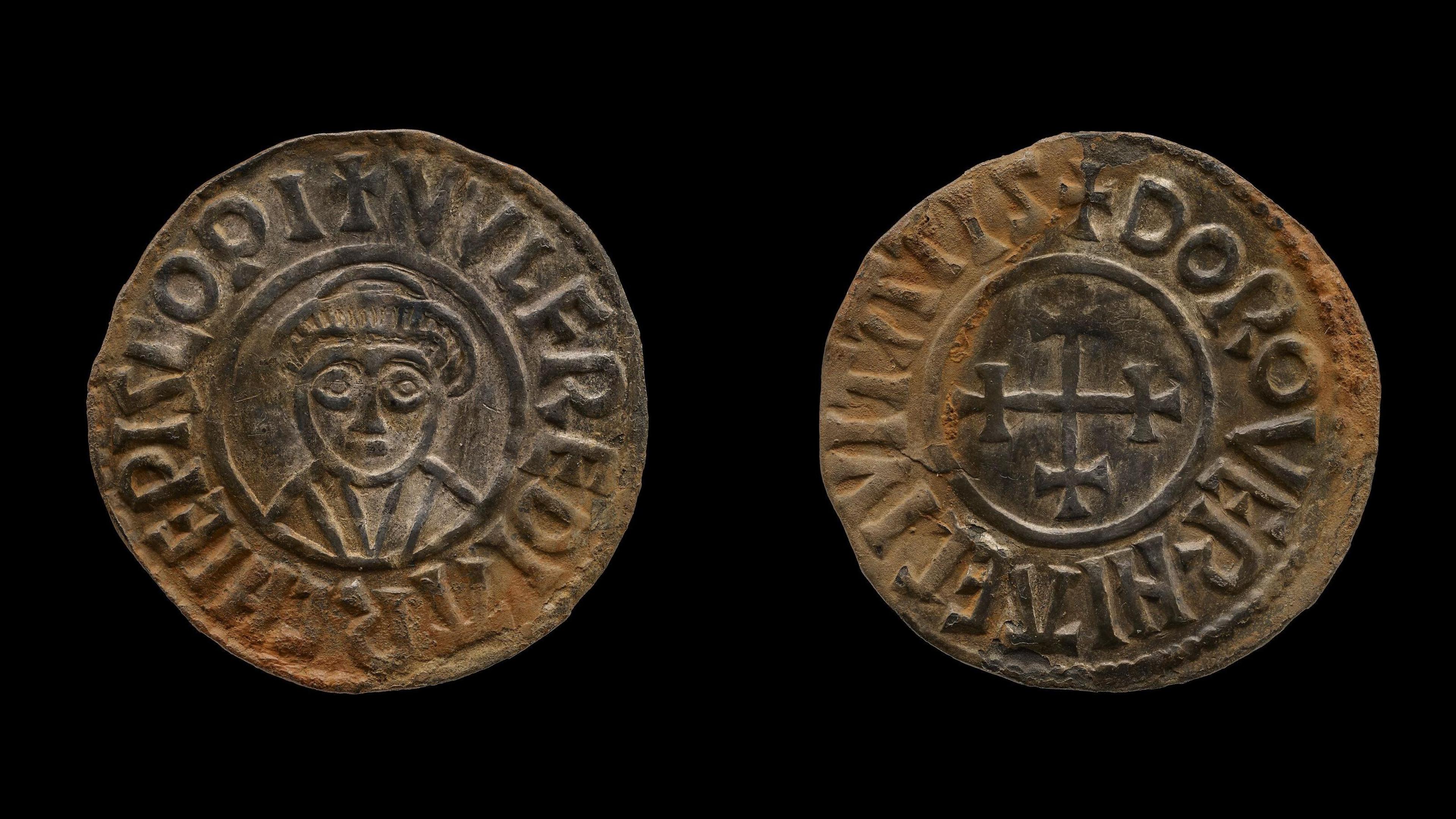
This silver coin features Archbishop Wulfred of Canterbury (805-832)
This week, George Powell applied to the Royal Courts of Justice in London for the right to appeal against the judge's order.
Mr Justice Wall refused the appeal and said there was evidence Powell had found the 300 coins and intended to profit from them.
He told the court that “no errors have been made and Judge Cartright’s decision had been well-reasoned, logical and founded on evidence".
Any chance of George Powell overthrowing his conviction appears to have gone, but the obvious question remains.
Dr Gareth Williams was working at the British Museum when he examined 31 coins originally seized by police. “This is a hoard of enormous historical significance both for Herefordshire and for the nation as a whole,” he said.
“The hoard raises many questions for our understanding of the period and those questions can only be answered in full if the hoard is secured for posterity in a museum collection.”

The hoard is set to be displayed in Hereford's new museum
Hereford’s Museum and Art Gallery is set to re-open next year after an £18.3m redevelopment.
In pride of place will be what remains of the Herefordshire Hoard, bought thanks to public donations.
“We would love to have the missing pieces of this extraordinary hoard returned to their rightful place in Herefordshire,” said museum lead Mr Etheraads.
“It's about reclaiming a piece of our collective history, enriching our understanding of the past and Herefordshire’s place in England’s national history, and preserving it for generations to come.”
Follow BBC West Midlands on Facebook, external, X, external, and Instagram, external, Send your story ideas to: newsonline.westmidlands@bbc.co.uk, external
Related topics
- Published14 May 2024
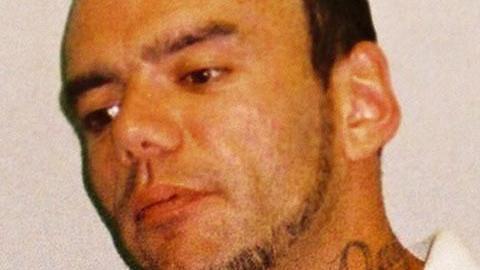
- Published4 May 2023

- Published21 December 2022
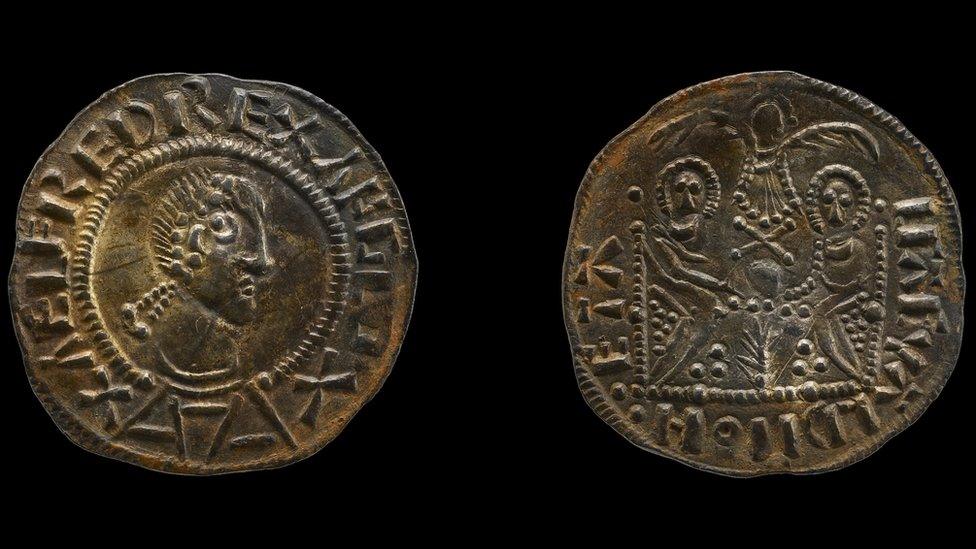
- Published22 November 2019
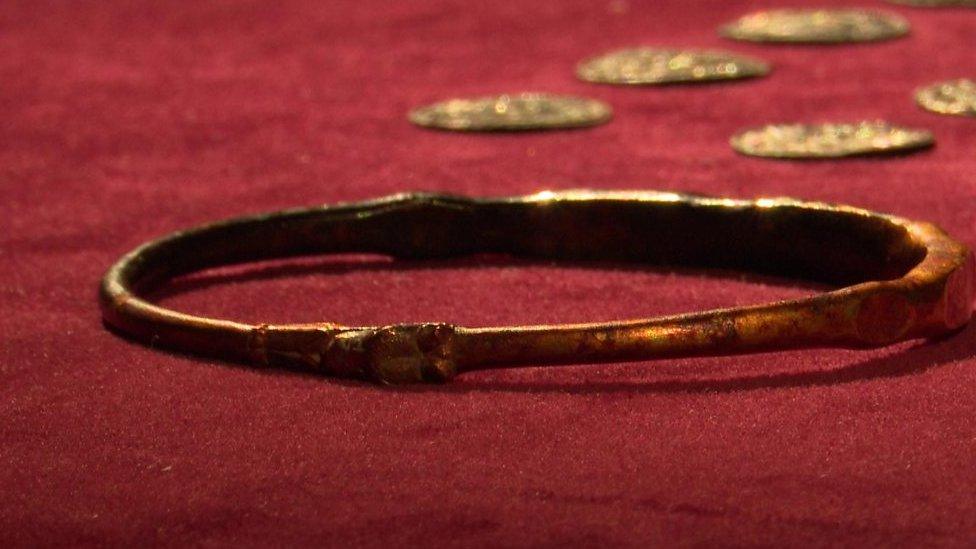
- Published21 November 2019
